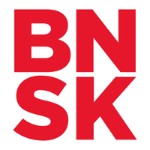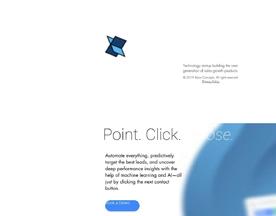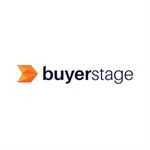What are battle cards? Battle cards are strategic tools used by sales teams to summarize key info on competitors, helping to outsmart rivals in deals.
Battle cards are a powerful tool used in sales to gain a competitive edge. These cards provide sales teams with the necessary information to understand the competition, their strengths and weaknesses, and how to effectively position their own product or service. Understanding these battles is essential for any sales team looking to improve their win rates and increase revenue.

Creating effective battle cards requires a deep understanding of the competitive landscape and the needs of the sales team. These sales cards should be concise, easy to understand, and provide relevant information on the competition. They should also be regularly updated to ensure that the information is current and accurate.
Integrating battle cards into a sales strategy is key to their success. Sales teams should be trained on how to use these cards effectively and should have access to them at all times. Best practices and optimization techniques can also be used to improve the effectiveness of these cards. By using battle cards, sales teams can gain a competitive advantage and increase their chances of success.
Key Takeaways
- These cards are a powerful tool used in sales to gain a competitive edge.
- Creating effective cards requires a deep understanding of the competitive landscape and the needs of the sales team.
- Integrating these cards into a sales strategy is key to their success.
Understanding Battle Cards
Definition and Purpose
Battle cards are a crucial tool for any sales team. They are concise, easy-to-read documents that provide sales reps with the information they need to win deals. A well-crafted card can help a sales rep to quickly understand the competitive landscape and position their product or service in the best possible light.
The purpose of a these cards is to provide sales reps with the information they need to win deals. This information includes details on the competition, the strengths and weaknesses of the product or service being sold, and key messaging that can be used to differentiate the product or service from the competition.
Types of Battle Cards
There are three main types of cards: competitive battle, product battle, and marketing battle cards.
Competitive cards focus on the competition. They provide information on the strengths and weaknesses of the competition, as well as key messaging that can be used to differentiate the product or service being sold from the competition.
Product cards focus on the product or service being sold. They provide information on the features and benefits of the product or service, as well as key messaging that can be used to position the product or service in the best possible light.
Marketing cards focus on the marketing messaging for the product or service being sold. They provide information on the target market, the key messaging, and the value proposition for the product or service.
It’s important to note that these cards are not a one-time creation. They should be updated regularly to ensure that they are accurate and up-to-date.
For more information on battle cards, check out this article by Forbes.
Creating Effective Battle Cards
Creating effective battle cards is a critical aspect of a successful sales strategy. These cards are concise and informative documents that provide sales representatives with the necessary information to engage in effective sales conversations with prospects and customers. Here are some key steps to creating effective battle cards.
Research and Data Collection
The first step in creating effective battle cards is to conduct thorough research and data collection. This involves gathering information about the product or service being sold, the target market, and the competition. This information can be gathered through a variety of sources, including market research reports, customer feedback, and competitive analysis.
One useful tool for gathering competitive intelligence is a SWOT analysis. This involves identifying the strengths, weaknesses, opportunities, and threats of both your own product and the competition. By understanding the competitive landscape, you can create these cards that effectively position your product in the market.
Identifying Key Differentiators
Once you have gathered the necessary research and data, the next step is to identify the key differentiators of your product. This involves identifying the unique selling points that set your product apart from the competition. These key differentiators should be highlighted in the card to help sales representatives effectively communicate the value of the product to prospects and customers.
Design and Customization
The final step in creating effective cards is to design and customize them for your sales team. This involves creating a visually appealing and easy-to-read document that includes all the necessary information. The card should be customized for each product and target market, with specific messaging and positioning tailored to the needs of the customer.
One useful resource for designing these cards is Canva, a free online design tool that allows you to create professional-looking documents with ease. By customizing your cards, you can ensure that your sales team has the necessary information to engage in effective sales conversations and close more deals.
In summary, creating effective battle cards requires thorough research and data collection, identifying key differentiators, and designing and customizing the document for your sales team. By following these steps, you can create these cards that effectively position your product in the market and help your sales team close more deals.
Here is a helpful resource for creating effective battle cards.
Content of a Sales Battle Card
A sales battle card is a crucial tool for sales teams to help them win deals against competitors. It is a concise and easy-to-use document that provides sales reps with the information they need to sell effectively. The following subsections outline the typical content of a sales card.
Competitor Overview
The competitor overview section provides a brief summary of the key competitors in the market. It includes information such as the competitor’s market share, strengths, weaknesses, and target customers. This section helps sales reps to understand the competitive landscape and position their product or service effectively.
Product and Service Comparison
The product and service comparison section provides a detailed comparison of the features and benefits of the company’s product or service against those of the competitor. This section helps sales reps to highlight the unique selling points of their product or service and differentiate it from the competition.
Pricing and Cost Analysis
The pricing and cost analysis section provides an overview of the pricing strategy of the company and its competitors. It includes information such as the pricing model, pricing tiers, and discounts offered. This section helps sales reps to understand the pricing landscape and position their offering effectively.
Customer Pain Points and Solutions
The customer pain points and solutions section provides an overview of the common pain points that customers face and how the company’s product or service solves them. This section helps sales reps to understand the customer’s needs and position their offering as the best solution.
Sales cards are an essential tool for sales teams to help them win deals against competitors. They provide sales reps with the information they need to sell effectively and differentiate their offering from the competition. For more information on creating effective sales cards, check out this resource.
Using Battle Cards in Sales

Battle cards are a powerful tool for sales reps to use when engaging with potential customers. They provide a structured approach to handling objections, closing deals, and delivering effective sales pitches and presentations.
Sales Pitches and Presentations
When it comes to delivering an effective sales pitch or presentation, these cards can be an invaluable resource. By providing a clear and concise overview of your product or service, you can quickly and easily communicate its value to potential customers.
One effective way to use these cards in sales pitches is to create a visual aid that highlights the key features and benefits of your product or service. This could be in the form of a slide deck, a brochure, or even a simple one-page overview. By using visuals to support your pitch, you can make it more engaging and memorable for your audience.
Handling Objections
Objections are an inevitable part of the sales process, but with the right approach, they can be turned into opportunities to close the deal. Battle cards can help sales reps to handle objections in a structured and effective way.
One approach is to use a table or matrix that lists common objections and provides suggested responses. This can help to ensure that sales reps are prepared for any objections that may arise, and can respond in a confident and knowledgeable way.
Closing the Deal
Closing the deal is the ultimate goal of any sales pitch, and battle cards can help to make this process more efficient and effective. By using a structured approach to closing the deal, sales reps can increase their chances of success.
One effective way to use these cards in closing the deal is to create a checklist of key steps that need to be taken in order to close the sale. This could include things like confirming the customer’s needs, addressing any remaining objections, and providing clear next steps.
Overall, these cards are a valuable tool for sales reps looking to improve their sales pitch, handle objections, and close deals. By using a structured and systematic approach, sales reps can increase their chances of success and deliver better results for their customers. For more information on using these cards in sales, check out this resource.
Integrating Battle Cards into Sales Strategy

When it comes to sales strategy, integrating these cards can be a game-changer for sales teams. These cards are concise and informative documents that provide sales reps with the information they need to win deals. By incorporating these cards into their sales strategy, sales teams can improve their win rates, boost performance, and provide better sales enablement and training.
Sales Enablement and Training
One of the primary benefits of using battle cards is that they provide sales enablement and training. These cards are designed to give sales reps a quick and easy way to access the information they need to sell effectively. By providing these cards to sales reps, sales teams can ensure that their reps are equipped with the knowledge they need to close deals.
To make the most of these cards for sales enablement and training, sales teams should ensure that their cards are up-to-date and accurate. This can be achieved by regularly reviewing and updating these cards to ensure that they reflect the latest information about products, services, and competitors.
Performance Tracking and Win Rates
Another benefit of integrating the cards into sales strategy is that they can help sales teams track performance and improve win rates. By analyzing the data provided by the cards, sales teams can identify patterns and trends in their sales process. This can help them to optimize their sales strategy and improve their win rates over time.
To make the most of battle cards for performance tracking and win rates, sales teams should ensure that their cards are designed to capture the data they need. This can be achieved by including fields for key metrics such as deal size, deal stage, and competitor information.
In conclusion, integrating the cards into sales strategy can provide sales teams with the information they need to win deals, improve their win rates, and optimize their sales process. By using the cards for sales enablement and training, and for performance tracking and win rates, sales teams can achieve better results and drive business growth.
Here is a link to an external resource that provides more information about battle cards and their benefits.
Best Practices and Optimization
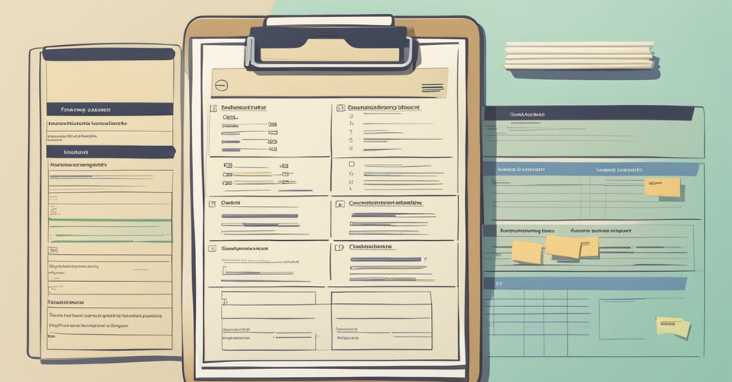
When it comes to Battle Cards, there are certain best practices that sales leaders can follow to ensure that their team is using them effectively. By following these guidelines, sales leaders can optimize the use of the Cards and increase their team’s chances of success in a competitive market.
Frequent Updates and Revisions
One of the most important best practices for the Cards is to ensure that they are kept up to date. This means that sales leaders should be constantly reviewing and revising their Battle Cards to ensure that they are accurate and relevant to the current competitive market.
To make this process easier, sales leaders can create a system for gathering feedback from their team and other resources. This feedback can then be used to make updates and revisions to the Battle Cards, ensuring that they are always up to date and effective.
Feedback and Continuous Improvement
Another important best practice for Battle Cards is to encourage feedback and continuous improvement. Sales leaders should create a culture of feedback within their team, where team members are encouraged to provide feedback on the Battle Cards and suggest improvements.
By continuously improving the Battle Cards based on feedback, sales leaders can ensure that they are always optimized for success in the competitive market. This can also help to increase team engagement and buy-in, as team members feel that their input is valued and used to make improvements.
To further optimize the use of Battle Cards, sales leaders can provide resources and templates for their team to use. This can include templates for creating Battle Cards, as well as resources for gathering competitive intelligence and other relevant information.
Overall, by following these best practices and optimizing the use of Battle Cards, sales leaders can increase their team’s chances of success in a competitive market. For more information on Battle Cards, check out this external resource.
Tools and Resources for Battle Cards
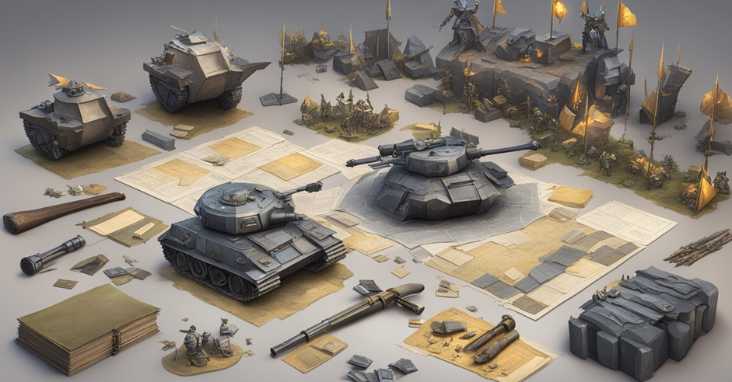
Creating effective battle cards requires a combination of skills, knowledge, and resources. This section highlights some of the essential tools and resources that can help sales reps create compelling battle cards.
Software and Platforms
There are several software and platforms available that can help sales reps create battle cards quickly and efficiently. One such platform is Crayon, a market and competitive intelligence platform that provides real-time insights into competitors, markets, and industries. Crayon offers a range of features, including battle card templates, sales tools, and case studies that can help sales reps create effective battle cards.
Templates and Examples
Templates and examples can be a great resource for sales reps who are new to creating battle cards. Battle card templates can help sales reps get started quickly and ensure that they cover all the essential elements of a battle card. Examples of effective battle cards can also provide inspiration and guidance on what works and what doesn’t.
One great resource for battle card templates and examples is the Sales Enablement Society. The Sales Enablement Society is a global community of sales enablement professionals that provides a range of resources, including battle card templates and examples. They also offer training and certification programs for sales reps and sales enablement professionals.
In conclusion, creating effective battle cards requires a combination of skills, knowledge, and resources. Sales reps can use software and platforms like Crayon to create battle cards quickly and efficiently. Templates and examples can also be a great resource for sales reps who are new to creating battle cards. By leveraging these tools and resources, sales reps can create compelling battle cards that help them win more deals.
Measuring the Impact of Battle Cards
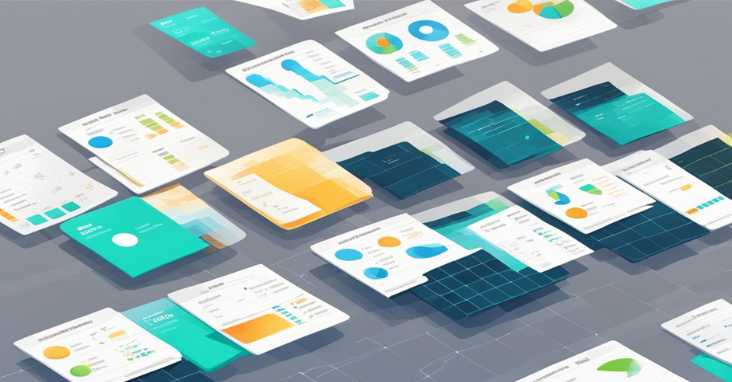
Battle cards are a powerful tool that can help sales teams to close deals and beat competitors. However, measuring the impact of battle cards is crucial to determine their effectiveness and ROI. In this section, we will explore how to measure the impact of battle cards and what metrics to use.
ROI and Sales Metrics
ROI is a crucial metric that measures the return on investment of battle cards. To calculate ROI, companies need to measure the costs of creating and distributing battle cards and the revenues generated from using them. ROI can help companies to determine whether battle cards are a good investment and whether they are generating enough sales opportunities.
Sales metrics are also important to measure the impact of battle cards. Sales metrics such as win rates, deal size, and sales cycle time can help companies to determine whether battle cards are helping sales teams to close more deals and increase revenue. Companies can use these metrics to track the effectiveness of battle cards over time and make adjustments as needed.
Customer Feedback and Market Response
Customer feedback and market response are also important metrics to measure the impact of battle cards. Companies can use customer feedback to determine whether battle cards are meeting customer expectations and whether they are providing value to customers. Market response can also help companies to determine whether battle cards are providing a competitive advantage and whether they are helping to differentiate the company from its competitors.
To measure customer feedback and market response, companies can use surveys, interviews, and other feedback mechanisms. Companies can also monitor social media and other online channels to determine what customers are saying about their battle cards and how they are responding to them.
In conclusion, measuring the impact of battle cards is crucial to determine their effectiveness and ROI. Companies can use metrics such as ROI, sales metrics, customer feedback, and market response to determine whether battle cards are providing value and helping to achieve business objectives. By measuring the impact of battle cards, companies can make data-driven decisions and optimize their battle card strategy for maximum impact.
Here is a great resource for more information on how to create and use battle cards effectively.
Frequently Asked Questions

How can battle cards be effectively utilized in sales strategies?
Battle cards can be a powerful tool in sales strategies, providing sales teams with the information and resources they need to effectively compete against their competitors. By providing key product and competitive information in a concise and easily digestible format, battle cards can help sales teams quickly identify and communicate the unique value proposition of their product or service. To effectively utilize battle cards, it is important to ensure that they are regularly updated with the latest information, and that sales teams are trained on how to use them effectively.
What are the key components of a well-designed battle card template?
A well-designed battle card template should include key information such as the product’s unique value proposition, key features and benefits, competitive differentiators, and objection handling strategies. It should also include information on the competitor’s product or service, such as their strengths and weaknesses, pricing, and market share. Additionally, a well-designed battle card should be visually appealing and easy to navigate, with clear headings and concise, easy-to-read text.
In what ways do battle cards differ between industries, such as tech and healthcare?
Battle cards can differ significantly between industries, as the competitive landscape and key selling points can vary widely. For example, in the tech industry, battle cards may focus on features such as speed, scalability, and integration with other systems, while in the healthcare industry, battle cards may focus on factors such as patient outcomes, cost-effectiveness, and regulatory compliance. It is important to tailor battle cards to the specific needs and priorities of each industry.
How do you measure the impact of battle cards on competitive marketing outcomes?
Measuring the impact of battle cards on competitive marketing outcomes can be challenging, as it can be difficult to isolate the effects of battle cards from other factors that may be influencing sales outcomes. However, some key metrics that can be used to measure the impact of battle cards include win rates, deal size, and sales cycle length. By tracking these metrics over time, it is possible to gain insights into the effectiveness of battle cards and make data-driven decisions about how to optimize them for maximum impact.
What are some best practices for creating battle cards for new product launches?
When creating battle cards for new product launches, it is important to start with a clear understanding of the product’s unique value proposition and competitive landscape. From there, it is important to gather input from key stakeholders such as product managers, sales teams, and subject matter experts to ensure that the battle card includes all of the key information needed to effectively compete in the market. Additionally, it is important to test the battle card with sales teams and gather feedback on its effectiveness, making adjustments as needed.
Can you provide examples of innovative uses of battle cards in customer engagement?
One innovative use of battle cards in customer engagement is to use them as a tool for customer education and thought leadership. By creating battle cards that focus on key industry trends and best practices, companies can position themselves as experts in their field and build trust with customers. Additionally, battle cards can be used to facilitate conversations with customers by providing sales teams with key talking points and objection handling strategies, helping to build stronger relationships and drive more sales.
For more information on how to effectively use battle cards in sales strategies, check out this article from SalesHacker, a leading resource for sales professionals.
Compare hundreds of Sales Enablement Software in our Software Marketplace



